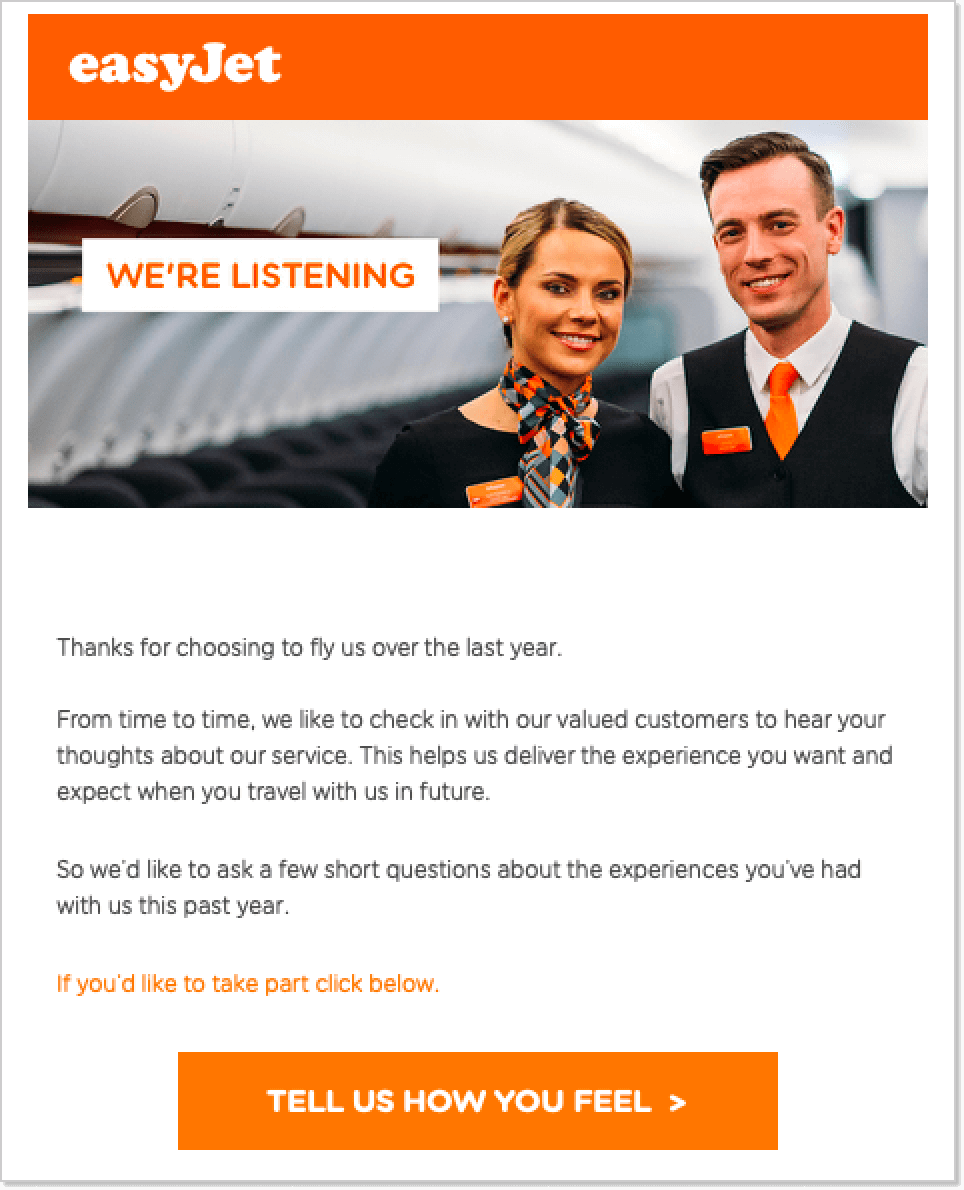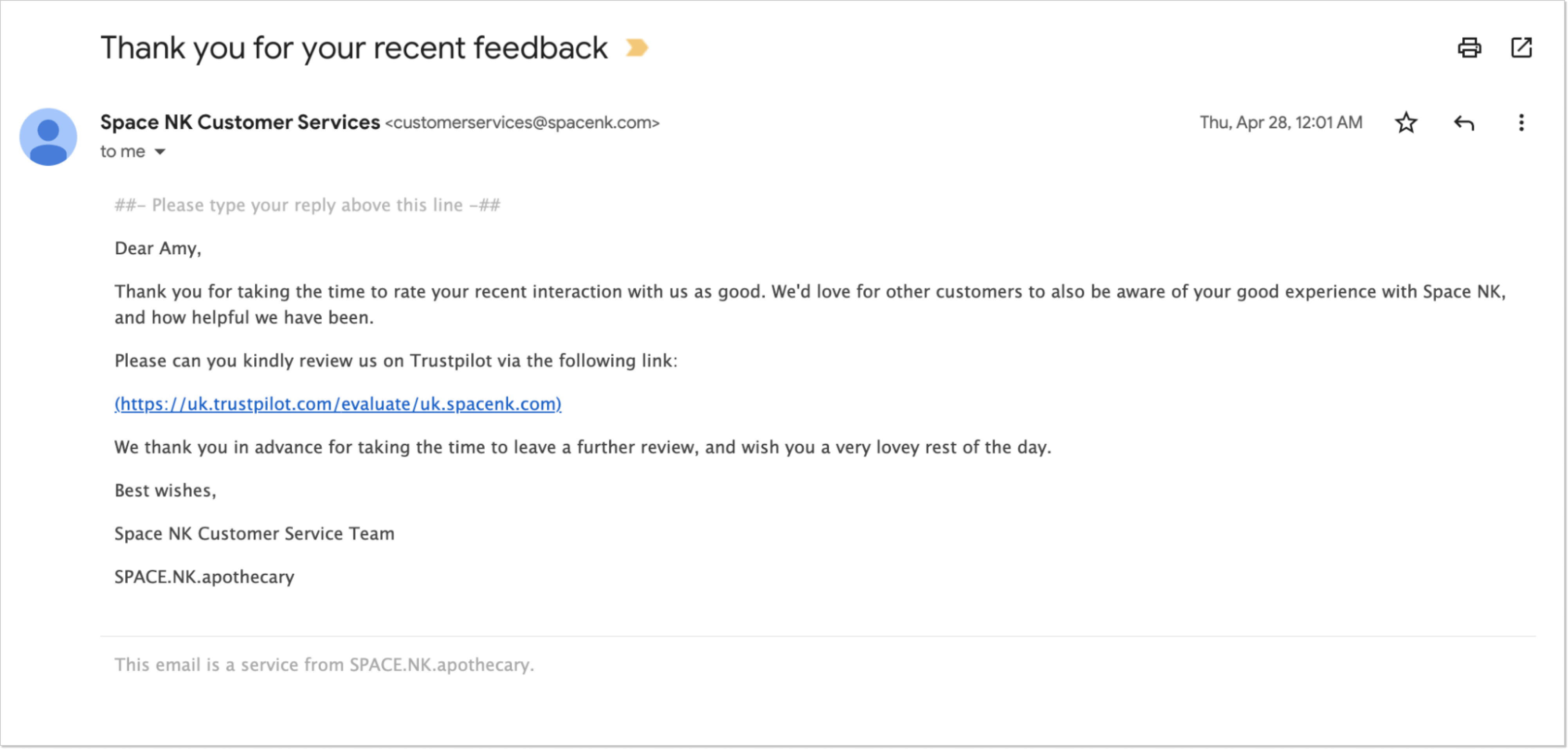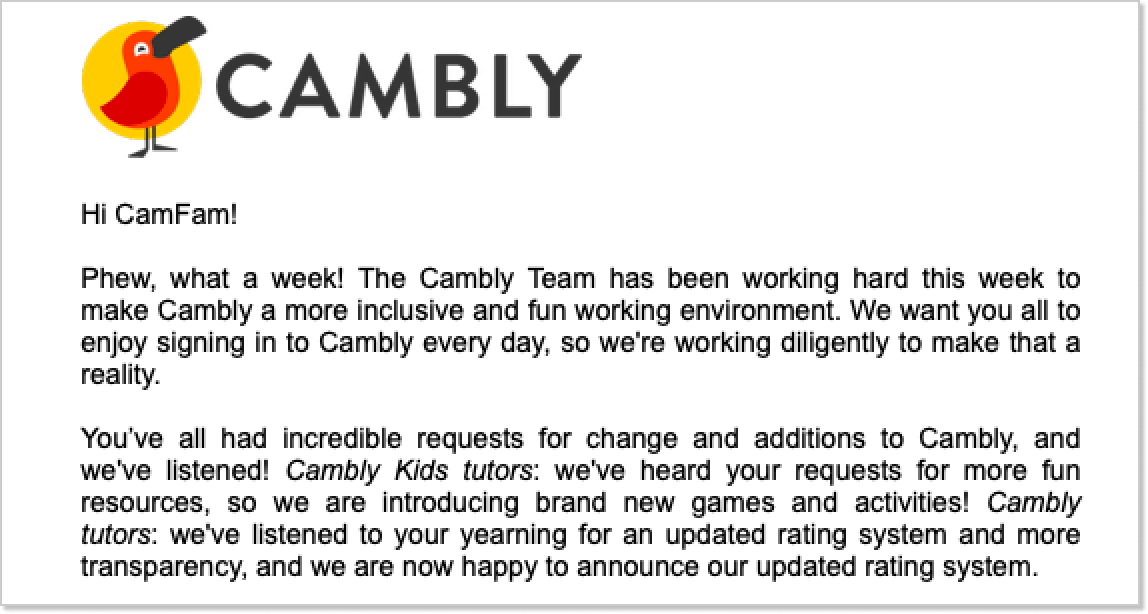How to Build an Effective Customer Feedback Loop
Discover the art of creating a customer feedback loop, an essential strategy for improving products and fostering trust.
Written by Evelina Carillo

Have you ever wondered why some businesses just nail it when understanding their customers? It’s like they have a direct line to what we’re thinking. The key might be a little something called a customer feedback loop.
We all want a brand that can swoop in and fix our problems fast. According to Zendesk, 3 in 4 customers are willing to spend more and do more often when a business delivers a top-notch customer experience.
The catch?
Many businesses are leaving money on the table by not tapping into the goldmine of customer feedback.
In this article, we’re breaking down what a customer feedback loop is and why it can be a game-changer for your business. We’ll also show you how it can take your feedback and turn it into gold for your product or service. Let’s get started.
What is a customer feedback loop?
A customer feedback loop is a strategy businesses use to keep improving their products or customer services based on what their users say. This loop is about constant interaction between the business and its customers, where their reviews, thoughts, and suggestions guide the company’s decisions. Instead of just gathering opinions, it’s about using customer feedback to shape better products, processes, and strategies.
Imagine you run a company selling a remote desktop management tool. To kickstart a customer feedback loop, you set up an easy system within the tool for users to share their two cents. A trend emerges as you sift through the feedback: users are itching for a more intuitive interface.

Instead of shrugging it off, your business jumps into action. You decide to give the interface a makeover based on valuable insights from your users. It doesn’t end there. Once the improvements are implemented, users are promptly informed by the customer service team about the changes, creating a transparent and effective customer feedback strategy.
The importance of customer feedback for businesses
Customer feedback can be your direct line to understanding customers and improving your business. Let’s break down four big reasons why listening to feedback from users is more than just a good idea:
It helps you understand clientele better
Your business might have done some market research, customer analysis and crafted detailed buyer personas, but nothing beats the insights from the horse’s mouth. Your customer’s feedback dives deeper into who they are, their experience of the customer journey, and what they expect from you.
When you learn more about your customer base, you can create memorable experiences that reach the mark, speaking directly to their needs. The result? They’ll stick around and buy more from you. But don’t just take our word for it. According to Twilio, over half of consumers say they’ll become repeat buyers after a personalized experience.
It gives you insight into how happy (or unhappy) your customers are
Want to know how satisfied your customers are? Unsolicited feedback, especially from those nifty customer surveys, gives you that information. Knowing their level of satisfaction can help you discover insights into what drives customer loyalty and fix anything that might be bothering them.
For example, if your company sells remote tech support software and your customers throw shade at the response time for issue resolution, that’s a jackpot of actionable insights. With this information, you can turn those customers’ frowns into smiles by cranking up your response rate.
To gauge happiness accurately, asking for user feedback at various intervals is important. Take the example below; alongside their regular feedback gathering, easyJet also collects yearly email surveys where customers can respond about all their positive and negative experiences. This encourages customers to reflect on the service and gives a more accurate view of their happiness.

It helps you better train your support teams.
Think of customer feedback not as a mere pat on the back but as a support team training manual. The behind-the-scenes guide helps managers understand the ins and outs of what’s working and how to deal with unhappy customers. This is about making every support interaction a win for the customer. The feedback shows your managers where the team shines and where they can level up.
It fuels continuous innovation
Customer feedback can catalyze innovation and provide great information for your product team. By actively listening to your customers, you open the door to fresh ideas and perspectives that can inspire new product features or service offerings. Customers often suggest improvements or innovations that you might not have considered internally. Embracing this input propels your business forward, keeping your offerings relevant and exciting.
6 steps to create an effective customer feedback loop
By now, you should understand why getting customer feedback is important for your business. But how do you create a feedback loop that works effectively? Here are some simple steps.
Ask customers for feedback by creating surveys or forms

Begin the feedback journey by reaching out to your customers. Craft surveys or forms that act as invitations to share their thoughts rather than checkboxes to tick. Imagine you’re sitting across from them, genuinely interested in their experiences. Keep it warm and simple, and ask open-ended questions to foster an environment where they feel heard and valued.
When creating your feedback surveys or forms, be sure to follow these actionable tips:
- Start with a personalized greeting: Open with a friendly greeting. Address your customers by their names to create a more personal connection. A warm introduction sets the tone for a positive feedback experience.
- Use clear and concise language: Frame questions in a way that is easy to understand. Avoid jargon or complex language that might confuse your customers. The goal is to make the survey or form accessible to everyone, encouraging honest and thoughtful responses.
- Focus on specific experiences: Instead of broad inquiries, ask about particular interactions or experiences. This helps gather targeted feedback that you can act upon. For example, inquire about a recent purchase, customer service encounter, or a specific feature they used.
Provide varied platforms and tech for easy customer interaction
Offer your customers a variety of avenues to express their opinions. You want to make it a seamless experience, letting them pick the most natural channel. By doing so, you’re meeting them where they are, creating accessibility, and encouraging more candid sharing. For example, HelpCrunch offers the all-in-one customer communication platform so clients can share their opinions and get help in whichever way suits them best.
Tailor your approach based on audience demographics, preferences, and the unique characteristics of your business. The key is to combine multiple channels to ensure a comprehensive understanding of customer feedback. Here are some avenues to consider:
- Social media
- Dedicated feedback portals
- Live chat tools on your website or in-app feedback
- Interactive web forms
- SMS surveys
- Webinars and virtual town halls.
Thank customers for their feedback by sending automated emails
When your customers take the time to share their thoughts, show genuine appreciation. Use automated emails not just as routine acknowledgments but as heartfelt thank-you notes. Let them know their input matters beyond the transaction – it contributes to the ongoing conversation between your brand and its customers.
For example, look at the Space NK follow-up email that conveys how much the feedback is appreciated and directs them towards trustpilot should they want to leave more.

Doing this strengthens the positive connection between your brand and your customer, encouraging ongoing engagement.
Check out our best practices for sending thank-you responses:
- Personalize your thank you cards: We mentioned this a little earlier, but it’s important to note again that people love personalization. When thanking them for their feedback, be sure to use their name.
- Be timely: Send the thank-you email or note promptly after receiving the feedback. Timely acknowledgment reinforces the impression that you value your customers’ time and their opinions.
- Ask for permission to share: If your customers gave you great feedback, you will want to shout this from the rooftops. But before you do, ask if you can use their feedback as a case study!
Look for customer feedback trends and patterns
Analyze their thoughts, seeking out recurring themes and patterns. This helps distill insights that might be hidden in the details and prioritizes areas for improvement.
By uncovering these trends, you gain a deeper understanding of your customers’ collective experiences and expectations, allowing you to tailor your business strategies accordingly. Additionally, it can provide great insights into how you might capture future customers and develop new products.
Here’s how you can expand on the process of looking for customer feedback trends and patterns:
- Categorize feedback themes: Sort through the responses to group similar comments together. These categories might include feature requests, service experiences, customer pain points, and improvement suggestions.
- Utilize data visualization tools: Consider employing data visualization tools to represent feedback trends graphically. Graphs, charts, and heatmaps can visually overview the most prevalent issues. Visualizing data makes it easier to identify patterns quickly and communicate insights effectively within your team.
- Time-based analysis: Analyze over different periods to observe how customer sentiments evolve. This approach helps in spotting whether certain issues are recurring or if there are specific periods where feedback spikes or declines.
Let the customers know about product and service changes
Stay connected with your customers by sharing updates inspired by their feedback. Tell them about any changes you’ve made in response to their feedback. Be open and honest, making them feel like valued partners in the journey. This honesty fosters trust and assures them that their opinions matter.
Here are some actionable tips for getting this right:
- Give quick and proactive updates: Keep your customers informed promptly and proactively. Don’t wait for major launches. Instead, share updates regularly. This creates a sense of involvement and keeps customers engaged in the evolution of your offerings.
- Highlight positive impact: Speak directly about how your changes directly respond to their thoughts and ideas. Paint a vivid picture of these tweaks’ positive impact on their experiences. Help them see the connection between their feedback and your tangible improvements.
Reference feedback for product and service improvements
Regularly review what your customers are saying to make adjustments to your products or services. It’s not just about acknowledging their input. It’s actively using their insights to enhance what you offer.
The example below shows how Cambly uses feedback to improve their service and how they make sure they keep their tutors updated, acknowledging how useful the feedback has been.

Another approach is sharing success stories straightforwardly and integrating them into the ongoing narrative – a collaborative journey where feedback plays a crucial role in improving your business.
Here are some tips to do this right:
- Set up regular sessions to review: Schedule dedicated times to review your customer feedback. This could be a weekly or bi-weekly team meeting where you dive into recent feedback.
- Categorize and prioritize feedback: Create a system to categorize the input based on themes or topics. Whether it’s positive or negative feedback, you could look at specific keywords. Once you’ve done this, prioritize the issues or suggestions that align with your business goals and customer satisfaction.
- Create an action plan: Turn feedback into action items. For each piece of feedback, define specific steps or changes that can help you address the concerns or capitalize on positive feedback.
- Use customer feedback metrics: Implement key performance indicators (KPIs) related to customer feedback. Monitor metrics of customer satisfaction such as Net Promoter Score (NPS) and customer retention to measure the impact of feedback-driven improvements.
Key takeaway
So, there you have it—our complete guide to building an effective customer feedback loop. Connecting with the amazing people who choose your brand is about weaving trust and loyalty into every interaction.
Remember, treat your customers like friends. Because, in a world of transactions, forming a bond that feels like catching up with old friends transforms the customer experience into something personal, warm, and genuine.
Give your customers a variety of ways to share their thoughts. We all express ourselves differently, so whether they’re typing out paragraphs or sending emojis, make sure every voice has a space to be heard.
Don’t forget the magic of a sincere “thank you.” Taking a moment to express genuine gratitude stands out. Let your customers know they’re a vital part of our story and that you’re truly thankful.
Stay tuned to the world around you. Things change, trends shift, and being in sync with what’s happening helps us adapt and grow.
So, with a big “thank you” and a genuine eagerness to hear more, here’s to happy conversations, meaningful connections, and the exciting adventure ahead!





